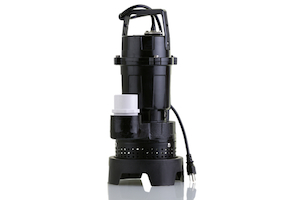 If you’ve ever had water in your basement or lower level, you know it’s a big mess, a big hassle, and a big expense. At Jeremy Services, we never want to see your home damaged, especially by spring storms. That’s why, although we don’t install sump pumps, we broke down the ins and outs of sump pumps, to help you avoid a wet situation this spring if your home experiences a power outage.
If you’ve ever had water in your basement or lower level, you know it’s a big mess, a big hassle, and a big expense. At Jeremy Services, we never want to see your home damaged, especially by spring storms. That’s why, although we don’t install sump pumps, we broke down the ins and outs of sump pumps, to help you avoid a wet situation this spring if your home experiences a power outage.
How a Sump Pump Works
A sump pump consists of a pit with a pump in it that automatically turns on when the water level in the pit reaches a certain height. It signals the motor to pump the water out of the pit, until it no longer senses water.
Then, the water is able to exit the pit through a pipe that is attached to the pump, delivering it outside your home and away from your foundation.
Related Read: Spring Storm Power Outages – 8 Standby Generator Benefits
How Does Water Get into my Home?
Luckily, most homes in Kansas City have sump pumps. Unless you are high on a hill, there’s a chance that your basement is at risk of flooding if it rains hard enough, for an extended period of time. Water can get into your home three different ways:
- From the Ground – Water below the ground can seep into your basement. A sump pump will help remove the water, provided there is drain tile in the area where the seepage occurs that is properly connected to the sump pump.
- From the Sewer – When it rains, sewer mains in the street can become overloaded. When this happens, the water must find another route to run which possibly leads into your basement.
- From Above – Gutter runoff along the home, poor tuckpointing along the foundation wall, walks, porches, patios that aren’t angled away from the foundation, etc. can also be a source for water to find its way into your basement.
Regardless of how it gets in, it’s best that all homes have a system in place that will pump out stormwater before it causes any damage.
The Importance of Backup Sump Pumps
During thunderstorms, you need your sump pump the most. Storms can dump a lot of water at once, making your sump pump the most important appliance in your home.
Unfortunately, thunderstorms are also notorious for causing power outages. Obviously, this is a problem when your sump pump relies on electricity to operate. How can you avoid this disaster? We recommend installing a battery-backup sump pump along with your main sump pump. A battery-backup pump will sense when the electricity goes out and kick in to replace your main pump.




